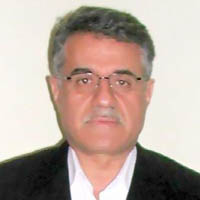Assessment of the MODIS Data Ability in Quantitative and Qualitative Analysis of Air Quality in Urban Area
Abstract:
Introduction The aerosols present in the atmosphere that consist of suspended solid and liquid particles and have natural and human origin, are the main causes of air pollution and consequently are the basis for creation and/or exacerbation of heart cardiovascular and respiratory. In recent years, the need for monitoring and control of air pollutants in wide scale and with an acceptable speed and accuracy is felt. The most important advances in satellite remote sensing is the ability to retrieve characteristics of particulate matter's over the land through use of MODIS sensor on Terra and Aqua platforms. Due to the availability of at least one MODIS images per day from our country, it is possible to estimate the suspended particles’ concentration in the atmosphere above each pixel. Materials and methods 20 stations in citywide record pollutants such as Carbon Monoxide, Nitrogen Dioxide, Sulfur Dioxide, concentration of Aerosol less than 10 micron size and lead concentration on the hourly based intervals. In this research MODIS level1 and MODIS level2 images were used. These data contains radiance and reflectance at top of atmosphere all coordinated, calibrated and atmospherically corrected. These data are available under names MOD02QKM, MOD02HKM, and MOD021KM with spatial resolution of 250, 500 and 1000 meters respectively. Along with these images, pollutant data collected in pollution surveying stations were used for quantitative and qualitative analysis of suspended particles in wide scales. (Verbeeten and Barendregt, 2007). SWAT model was developed to predict the effects of land management activities on water, sedimentation and chemical-agricultural agents with a variety of soil, land cover and management conditions in the large-term period. This model is a physical model. This model uses specific information about air, soil, topography, vegetation and land cover in the basin instead of using the equations to describe the relationships between input and output.Sub basins are divided to hydrological response parts (HRUs). Several parameters for model calibration have been selected. All parameters considering the river flow calibration have been adjusted by using of hydrometric station data of Ghara Baghestan. These parameters were selected according to previous researches in the field of calibration of SWAT model (Kati et al., 2005).Model calibration has been done with correlation function value, simulation of monthly flow, Nush-Sutcliffe (Ens), average of monthly flow and variance of monthly flow between 1992-1996. Model assessment have been carried out between 1998-2000Considering pronounced effect of temperature and precipitation variables on the water resource systems, agriculture, environment and etc., basic studies on the climate change effects is mainly on these two variables. As it can be seen, average of long-term monthly temperature increase in the period of 204-2069 the increasing of average annual is 2.6°C, maximum decrease is 4.5 °C in June and minimum decrease is 1°C in December. In season comparison, summer has maximum increasing in the temperature than other seasons. This increasing is 4°C, while average of winter temperature increase is 1°C.ConclusionIn this study the effect of climate change on the outflow of Ghare Sou basin in the period of 2040-2069 with HadCM3 model, one of the AOGCM model under A2 Scenario, has been analyzed. Continuous simulation model of runoff was applied to study hydrology of the basin under climate change conditions.The results of temperature and precipitation scenarios of HadCM3, from forth IPCC report, and simulated time series model with SWAT (rainfall-runoff model) showed that climate and hydrological parameters of Ghare sou have significant changes in the future.
Keywords:
Climate Change , SWAT , HadCM3 , Ghare sou
Language:
Persian
Published:
Journal of Climate Research, Volume:1 Issue: 3, 2012
Page:
61
magiran.com/p1031736
دانلود و مطالعه متن این مقاله با یکی از روشهای زیر امکان پذیر است:
اشتراک شخصی
با عضویت و پرداخت آنلاین حق اشتراک یکساله به مبلغ 1,390,000ريال میتوانید 70 عنوان مطلب دانلود کنید!
اشتراک سازمانی
به کتابخانه دانشگاه یا محل کار خود پیشنهاد کنید تا اشتراک سازمانی این پایگاه را برای دسترسی نامحدود همه کاربران به متن مطالب تهیه نمایند!
توجه!
- حق عضویت دریافتی صرف حمایت از نشریات عضو و نگهداری، تکمیل و توسعه مگیران میشود.
- پرداخت حق اشتراک و دانلود مقالات اجازه بازنشر آن در سایر رسانههای چاپی و دیجیتال را به کاربر نمیدهد.
دسترسی سراسری کاربران دانشگاه پیام نور!
اعضای هیئت علمی و دانشجویان دانشگاه پیام نور در سراسر کشور، در صورت ثبت نام با ایمیل دانشگاهی، تا پایان فروردین ماه 1403 به مقالات سایت دسترسی خواهند داشت!
In order to view content subscription is required
Personal subscription
Subscribe magiran.com for 70 € euros via PayPal and download 70 articles during a year.
Organization subscription
Please contact us to subscribe your university or library for unlimited access!



